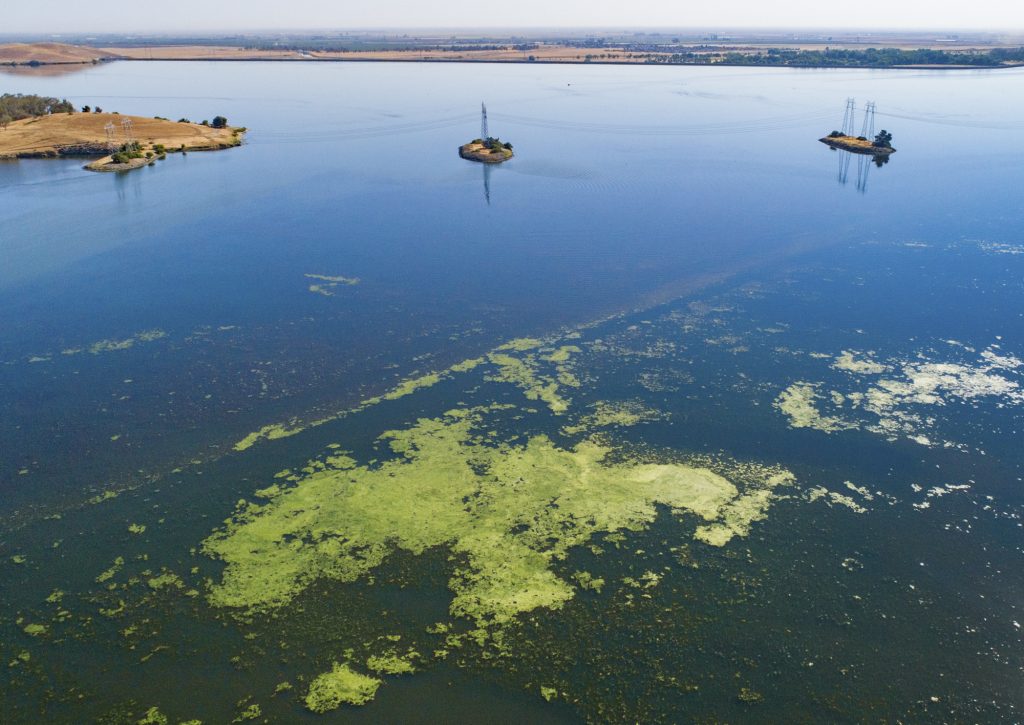
California is embracing the wrong strategy for carbon sequestration. Why not algae?
In summary
The California Air Resources Board is overlooking more effective and sustainable forms of carbon sequestration, such as algae, as officials finalize its scoping plan. The strategy is instead turning to flawed carbon capture technology favored by the fossil fuel industry.
California’s new climate strategy for slashing greenhouse gas emissions and meeting ambitious carbon neutrality goals is bold and transformative at best and an aspirational pipedream at worst.
The California Air Resource Board’s revised climate change blueprint, called its scoping plan, reflects the urgency of the moment, yet overlooks the power of the planet’s greatest natural carbon sink – water – as a means for achieving carbon neutrality.
2022 has undoubtedly been a year of aggressive climate action in California, with dozens of new laws on the books and major investments on the way. But the new climate roadmap’s reliance on carbon capture technology does not align with the moral imperative of ending dependence on fossil fuels. To meet its goals and remove carbon dioxide at scale, California must harness the power of blue carbon – atmospheric CO2 captured and stored in water.
Environmental groups have long criticized carbon capture and storage as a greenwashing sleight designed to extend fossil fuel power plant longevity. Since the 1970s, billions of dollars have been invested in carbon capture projects in the U.S. But a recent study by the Institute for Energy Economics and Financial Analysis found that most projects have been financially perilous, and the successful ones were in the natural gas sector, enabling further emissions.
Carbon capture technology is an overhyped underperformer, not feasible at scale, and diverts money and political will away from real climate solutions.
Rapid decarbonization can be achieved more effectively by investing in aquatic ecosystems and the blue carbon sequestered within. The protection and restoration of wetlands, peatlands and tidal marshes, which are rich in blue carbon, have already gained currency. The new frontier in natural carbon removal lies in sinking huge volumes of microalgal biomass.
Toxic algal blooms have exploded in frequency and intensity from California to the Carolinas and beyond. By triggering and accelerating an entire population collapse of toxic algae, fantastic volumes of carbon can be scrubbed from the atmosphere, improving water quality as well as water availability at the same time.
Consider how this might play out in California. Every summer, hundreds of noxious blooms from Clear Lake to Lake Elsinore force residents indoors to escape the stench and avoid the headaches and respiratory problems caused simply by breathing near an infected lake. Remediating toxic algal blooms on Clear Lake alone would remove a significant amount of carbon.
Microalgae are carbon-sucking powerhouses that exist within all natural water bodies. They absorb atmospheric carbon dioxide at an unparalleled rate, removing gigatons of carbon through their natural process of photosynthesis. When microalgae, such as blue-green algae, multiply rapidly in nutrient-dense waters, they produce toxins and form blooms. These blooms suffocate aquatic ecosystems, poison marine life, endanger human health and damage local economies.
When toxic algae are treated and killed, they sink to the bottom of a water body along with the massive amounts of carbon they’ve sequestered. That carbon remains locked away for thousands – if not millions – of years, allowing healthy algae to grow in their place and restoring the health of ecosystems.
California faces a stark reality: rising air and water temperatures, megadrought, disappearing glaciers and record wildfires. These aggravating climate factors all contribute to the staggering rise in toxic algal blooms in California and around the globe. Every climate plan must include blue carbon strategies.
Water is California’s most precious natural resource and it must be protected. Focusing emission removal efforts on water to sequester carbon at gigaton scale is the only scalable, economical way to achieve California’s ambitious climate goals and further elevate its position as a global leader on climate change.
- CalMatters.org is a nonprofit, nonpartisan media venture explaining California policies and politics.






